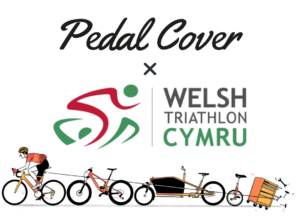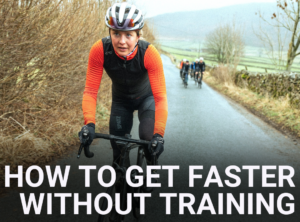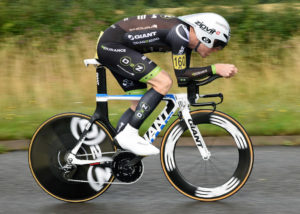The days of big ring grinding à la Eddy Merckx and Jan Ulrich, are now long gone. It’s time to welcome the new age of washing-machine legs and ridiculous gear ratios into the pro peloton. But could higher cadence just be another cycling ‘hype’ like the RockShox road suspension fork of the late 90’s, or is it a style that’s here to stay?
Let’s take a look at the science behind the phenomenon, its notable revolutionaries, the stalwart traditionalists and whether or not it’s something we amateurs should consider adopting…
The science behind the phenomenon
Pedalled by cycling pioneers such as Lance Armstrong in the late 90’s and Team Sky in the modern peloton, high cadence riding is quickly becoming the norm among many of the sport’s top climbers and GC specialists. To put it simply, cadence is the rate at which a cyclist pedals, often measured in revolutions per minute (RPMs). Increasing your cadence, and therefore the number of revolutions your complete in a minute, is said to slowly improve your overall cycling efficiency – allowing you to pedal for longer and faster than ever before.
The higher the cadence, the less strain your muscles exert with each pedal stroke. ‘Spinning’ in a lower gear engages your slow-twitch muscles which are a lot more effective for longer, more prolonged efforts in the saddle, i.e. a long Alpine climb. These muscles are more resistant to fatigue than fast-twitch muscles and are also able to recover quickly when allowed to rest.
A higher cadence also increases the amount of blood flow to your muscles, which in turn means more oxygen is coursing through your body, increasing your aerobic performance. It sounds quite similar to a certain banned substance, and in a weird way, it has a very similar effect – no wonder it was favoured by cycling’s estranged villain, Lance Armstrong.

You might think that pedalling faster would exert a lot more effort on your cardiovascular system, leaving you breathless and soon out of energy. Well, it turns out that the cardiovascular system is a highly efficient workhorse and, unlike the muscular system, it doesn’t take nearly as long to recover. As the cardiovascular system is only limited by its own capacity, it’s all down to how much air and oxygen it’s bringing in, rather than by how much work it’s already done.
The goal most riders try to reach is around 90 RPM, the ‘goldilocks zone’ between preventing leg fatigue while still making the most out of the aerobic-efficient, slow-twitch muscles. However, for most amateurs, this goal is a long way from achievable – the average cadence of an amateur cyclist falls around the 60 RPM mark. As a result, it’s difficult to engage the same slow-twitch muscles as the pros, leaving amateurs feeling fatigued far quicker.
The revolutionaries vs the stalwart traditionalists
In the top echelons of pro cycling sit the GC specialists, those that wage war across the one- to three-week stage races that litter the cycling calendar. Two riders that fall into that elite category, Chris Froome and Nairo Quintana, couldn’t be further removed when it comes to their preferred cadence – particularly while climbing.
Froome, the four-time Tour de France winner, opts for a cadence of around 100 RPM when hitting the steeper stuff, unleashing his characteristic ‘washing machine’ style of pedalling. It may look ungainly and inefficient, but six Grand Tour victories speak for themselves.
Quintana, on the other hand, climbs at around 75 RPM – a stark difference in the world of pro cycling. The slower cadence gives off the impression of a much more effortless, classy style – an homage to riders of old. However, looking at results, one could claim that it is significantly less effective and – to a degree – they’d be right.
The science is still very much a grey area with many stating that cadence, ultimately, comes down to preference. Professor Louis Passfield, British Cycling’s lead scientist for the Barcelona, Atlanta and Beijing Olympics says:
“As scientists we are struggling to explain the underlying mechanisms for how it [cadence] makes a difference. It’s all the more challenging as pedalling a bike seems a relatively straightforward task when taken at face value”
Other riders opting for the lower gears include Team Sky’s Wout Poels and the Luxembourg national champion, Bob Jungels – two riders swept up in the wave of spinning and 32-tooth sprockets. Flying the flag of tradition however, grinding up each and every climb they come across are riders like Tony Martin, Bauke Mollema and Vasil Kiryienka. To them this isn’t a matter of style, grinding is a way of life – a true hallmark of the sport.

Should I follow the pros?
So, here’s the big question: should I adopt the spin? Doing away with big gear grinding? Not so fast. Cadence doesn’t just change overnight; it can take months, sometimes years to totally change the way you pedal your bike, especially if you’re settled and comfortable into one specific style.
Adopting a higher cadence has also been proven to be vastly inefficient for many amateur riders as it wastes a lot of energy moving your legs up and down, rather than working to move your bike forward. It’s a simple fact that we can’t push the same large gears as the pros and neither should we try to emulate them. Not only can we waste up to 60% of our energies trying to reach 90 RPM in the same ratio, but we also run the risk of blowing – hitting the wall – a whole lot sooner, as our bodies are unable to stave off the wave of fatigue.

However, just like with the pros, opting for a high cadence or low cadence purely comes down to a matter of preference. Spinning may only be more efficient for the most elite of cyclists, but it doesn’t mean us mere mortals should not adopt the ‘washing machine’ legs – to glide up the local 25% monster climb – if we can without causing problems. Whether we grind or spin, we’re never going to match the speed of the pros, so it’s best to leave the science to them and get on with the more important things in life – just riding our bikes.
What’s your preferred pedalling style? We’d love to know, make sure to drop us a message on Twitter or Facebook.






